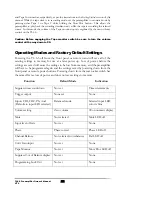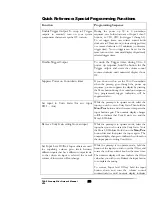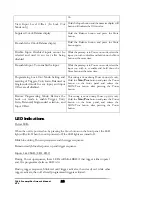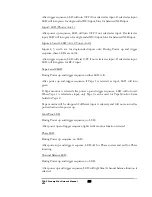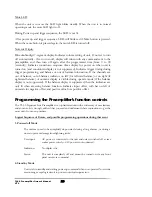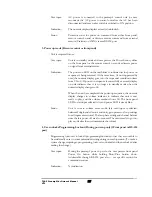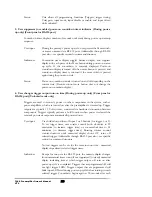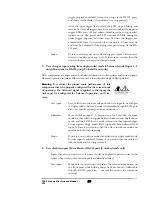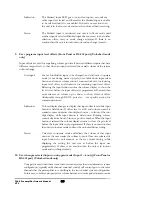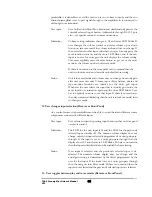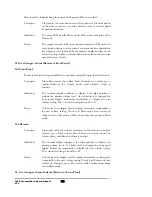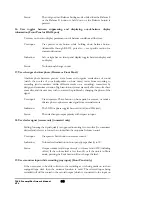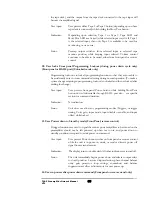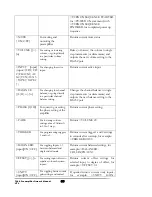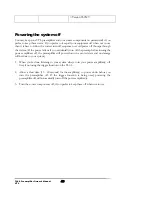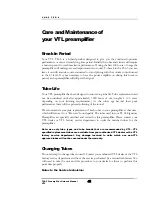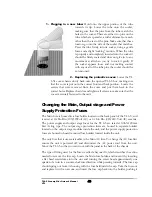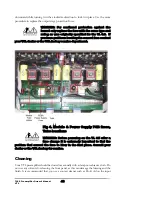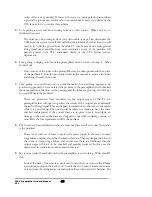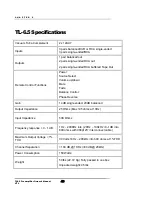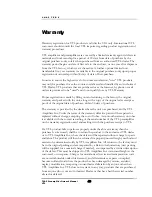
User changes mind on powering down, or powers down accidentally, and does not
wish to wait for 90 second power up timer in order to be able to continue operation.
User input:
User presses power button again within 2 seconds of pressing power
down. (Does not apply to power down codes sent from external
remote.)
Indication:
Volume display changes from double dashes to previous volume
setting that was displayed when power down command was sent
from front panel or remote wand.
Status:
Unit un-mutes and returns to volume setting when power off
command was sent.
23. User programs external remote with existing codes, plus discrete (extended) codes
Central remote systems require just one remote console to control the whole system.
While there is bi-directional communication about the operating status of the TL 6.5
preamplifier via the RS-232 port, if using a remote infra red extender there is no bi-
directional status information available via infra red connection, and it is required that
discrete commands be used by the central remote, so that it does not get out of synch
with the preamplifier. The replaced commands are the toggle commands that use the
same command to toggle between two opposing states of operation.
User input:
Communication of direct remote codes to bypass toggle commands
for Crestron, AMX or Pronto. Use standard user wand with
temporary internal jumper, for some extra codes from 4 extra
positions on remote key matrix (Mute ON, Mute OFF and Power
ON and Power OFF), or a dedicated programming remote wand
that provides all remote codes via I/R (containing alternate
processor chip with toggle commands deleted and changed to
Power (ON), Mute (ON) Phase (ON), and temporary internal
jumper for Power OFF, Mute OFF and Phase OFF) and output to
either Crestron, AMX or Pronto program file.
Indication:
As per Power, Mute and Phase.
Status:
As per Power, Mute and Phase. Unit reacts to additional direct
commands from external remote source via rear mounted IR
receiver, in addition to toggle commands as above.
Using the preamplifier with RS232 control
This preamplifier comes with sophisticated bi-directional control and communication
capabilities, where all of the control and query functions can be performed remotely,
and the preamplifier’s status information is communicated by its main microprocessor.
The preamplifier also communicates via the RS-232 port any changes made via the
front panel or remote wand, using what is called ‘event generation’, to keep other
connected components in synch with the TL-6.5.
Control functions and information returned are accessed through the rear RS-232 port
via a standard DB9 male female connector cable and standard ASCII text strings using
TL6.5 Preamplifier Owner’s Manual
VTL
36

